



Physical improvement is at the core of every athlete's journey. Whether you're a professional sports star or a weekend warrior, striving for physical enhancement is a common goal. This article delves into the athlete's path to physical improvement, outlining the key factors, strategies, and principles that drive success in this pursuit.
Goal Setting: The athlete's journey begins with setting clear and realistic goals. These goals may revolve around increasing strength, speed, endurance, or skill proficiency. By defining these objectives, athletes can create a roadmap for their physical improvement journey.
Consistent Training: Consistency is the backbone of physical improvement. Athletes must commit to regular and structured training sessions. Whether it's hitting the gym, practicing on the field, or working on technique, consistent effort is essential.
Nutrition And Diet: A well-balanced diet plays a crucial role in an athlete's physical improvement. Proper nutrition ensures that the body receives the necessary fuel to perform at its best, recover, and build muscle. Athletes often work with nutritionists to tailor their diet to their specific needs.
Rest And Recovery: Intense training puts strain on the body, and adequate rest and recovery are vital. This includes getting enough sleep, incorporating rest days into the training schedule, and using recovery techniques like massage and stretching.
Personalized Training Plans: Not all athletes are the same, and their training plans should reflect this. Tailored training programs, often designed with the help of coaches or trainers, consider the athlete's current physical condition, goals, and weaknesses.
Monitoring Progress: Regular assessment of progress is essential. Athletes use metrics such as performance data, body measurements, and feedback from trainers to track their improvement. These insights guide necessary adjustments to training and nutrition plans.
Mental Resilience: Physical improvement isn't just about the body; it's also about the mind. Athletes must develop mental resilience to push through challenges, setbacks, and plateaus. A positive attitude and strong mindset are key assets on this journey.
Cross-Training: Diversifying the training routine can accelerate physical improvement. Cross-training helps target different muscle groups, prevent overuse injuries, and enhance overall athleticism.
Seek Professional Guidance: Many athletes benefit from professional guidance, such as working with coaches, trainers, and sports medicine experts. These experts can provide specialized training programs, monitor progress, and offer valuable advice.
Injury Prevention And Recovery: Injuries are setbacks in an athlete's journey, but learning how to prevent them and recover effectively is crucial. A combination of proper warm-ups, cool-downs, and rehabilitation exercises can aid in both prevention and recovery.
Patience And Persistence: Physical improvement takes time, and athletes must be patient and persistent. Overnight transformations are rare, but consistent effort and dedication pay off in the long run.
The athlete's path to physical improvement is a multifaceted journey that encompasses goal setting, consistent training, proper nutrition, rest, and recovery. Personalized training plans, progress monitoring, mental resilience, and seeking professional guidance are also essential elements. With patience and persistence, athletes can achieve their physical improvement goals, becoming the best version of themselves and excelling in their chosen sport. Remember, the journey is as important as the destination, and every step taken brings athletes closer to their goals.
Getting Started Right
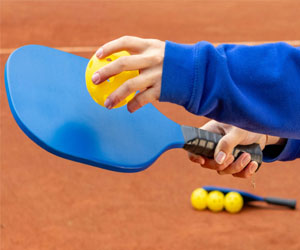 Pickleball Paddles: The heart of the game, pickleball paddles come in various shapes, sizes, and materials. Most paddles are made of composite materials or wood, with varying degrees of weight and grip sizes. Choosing the right paddle is a personal preference, but beginners often opt for a mid-weight, composite paddle with a comfortable grip. As you progress, you can explore different options to suit your playing style.
Pickleball Paddles: The heart of the game, pickleball paddles come in various shapes, sizes, and materials. Most paddles are made of composite materials or wood, with varying degrees of weight and grip sizes. Choosing the right paddle is a personal preference, but beginners often opt for a mid-weight, composite paddle with a comfortable grip. As you progress, you can explore different options to suit your playing style.
Pickleball Balls: Pickleball balls are specifically designed for the sport, featuring small perforations to optimize aerodynamics and control. Outdoor and indoor balls have distinct characteristics. Beginners should start with outdoor balls, which are more durable, and as you advance, you can experiment with indoor balls for a different playing experience.
Footwear: Comfortable and supportive athletic shoes with non-marking soles are a must for pickleball. Since the game involves quick lateral movements, it's essential to have shoes that provide stability and reduce the risk of injuries. Court shoes designed for tennis or indoor sports are suitable for pickleball.
Pickleball Net And Court: If you're playing pickleball regularly, having access to a proper court with a regulation net is essential. Outdoor courts can be found in parks, community centers, and recreational facilities.

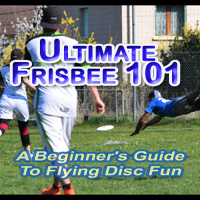
Techniques For Winning At Pickleball
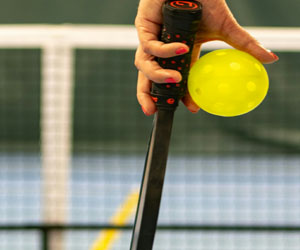 The Third Shot Drop: This technique is essential for gaining control of the net and outmaneuvering your opponents. After the serve, the third shot should be a soft, low drop shot that clears the net and lands near the non-volley zone (the kitchen). The goal is to minimize your opponent's offensive opportunities and establish a strong position on the court.
The Third Shot Drop: This technique is essential for gaining control of the net and outmaneuvering your opponents. After the serve, the third shot should be a soft, low drop shot that clears the net and lands near the non-volley zone (the kitchen). The goal is to minimize your opponent's offensive opportunities and establish a strong position on the court.
Positioning And Court Coverage: Successful pickleball players understand the importance of court positioning. In doubles, it's essential to cover the net and work as a team. The "Two-Up, Two-Back" strategy is often employed, with two players moving forward to control the net while the other two remain back to cover the baseline.
Volleys: Efficient volleying is a critical skill in pickleball. Mastering the technique of volleying, which involves hitting the ball out of the air before it bounces, enables players to dictate the pace of the game and put pressure on their opponents. Quick reflexes, precision, and the ability to control the net are key aspects of successful volleying.
Dinking: The dink is a short, soft shot made close to the net. It's an essential technique for maintaining control and patience during rallies. Dinking allows you to keep your opponents off balance, create opportunities for errors, and work your way toward the net for a put-away shot.
 Concealment And Ambushes: One of the oldest tricks in the book, concealing your presence and setting up ambushes can catch your opponents off guard. Blend into your surroundings, take advantage of natural cover, and wait for your opponents to walk into your line of fire.
Concealment And Ambushes: One of the oldest tricks in the book, concealing your presence and setting up ambushes can catch your opponents off guard. Blend into your surroundings, take advantage of natural cover, and wait for your opponents to walk into your line of fire.
Suppressive Fire: Suppressing your opponents by laying down a barrage of paintballs keeps their heads down and prevents them from making strategic moves. This tactic can provide cover for your teammates to advance or reposition.
Flanking Maneuvers: Outflanking your opponents is a classic cunning tactic. By taking a wide route to the side or rear, you can catch them in a crossfire, making it difficult for them to defend themselves effectively.
Communication And Coordination: Effective communication is a cornerstone of cunning tactics in paintball. Work with your team to share information about the enemy's positions and movements. Coordinate your actions to capitalize on weaknesses in your opponent's defenses.
Bait And Switch: Use one player as bait to draw opponents into a trap. When your opponent focuses on the bait, the rest of your team can ambush them from multiple angles.
Decoy Distractions: Create distractions to divert your opponents' attention. Throwing paintballs in one direction or using smoke grenades can confuse the enemy and give you an opportunity to move or attack strategically.

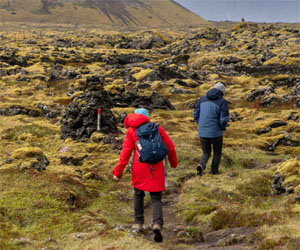
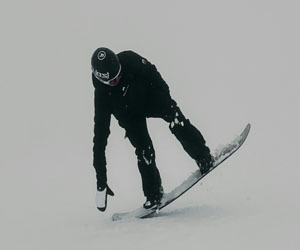
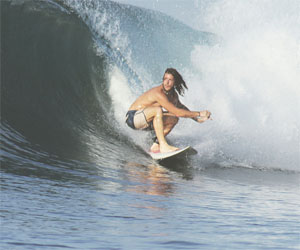
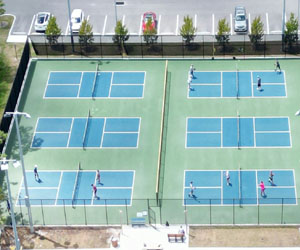

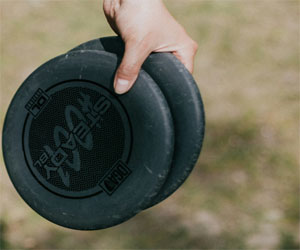 Ultimate Frisbee's origins in the counterculture movement of the 1960s are a significant part of its legacy. It reflects the spirit of that era, with an emphasis on peace, cooperation, and a rejection of traditional authority figures. The sport's early enthusiasts were drawn to its inclusive nature, where all genders and abilities were welcome, and players were encouraged to resolve disputes amicably. This ethos continues to shape the sport's culture and is evident in the high level of sportsmanship that players are expected to uphold, making it unique among competitive team sports.
Ultimate Frisbee's origins in the counterculture movement of the 1960s are a significant part of its legacy. It reflects the spirit of that era, with an emphasis on peace, cooperation, and a rejection of traditional authority figures. The sport's early enthusiasts were drawn to its inclusive nature, where all genders and abilities were welcome, and players were encouraged to resolve disputes amicably. This ethos continues to shape the sport's culture and is evident in the high level of sportsmanship that players are expected to uphold, making it unique among competitive team sports.
Over the years, Ultimate Frisbee has grown exponentially, expanding to all corners of the globe. It gained recognition as a legitimate sport and established governing bodies like USA Ultimate, which sets the rules and standards for the game in the United States. The sport's presence at the World Games and the World Flying Disc Federation World Ultimate Club Championships underscores its international reach.
One of the most remarkable aspects of Ultimate Frisbee's legacy is its inclusive and diverse community. Players hail from a wide range of backgrounds and cultures, and gender equity is a core value, with many teams embracing mixed-gender play. The sport's emphasis on fair play and mutual respect has fostered a close-knit global community that supports growth and development in new regions.
The legacy of Ultimate Frisbee extends beyond the playing field. The sport has inspired countless individuals to become ambassadors of the game, coaching and teaching the next generation.
 The call of the wilderness is also a call to disconnect from the digital realm and reconnect with our true selves. It allows us to escape the constant demands of our screens and experience life in its most unfiltered form. The lack of Wi-Fi and cellular signals is a blessing in disguise, as it encourages conversations around the campfire, storytelling under the stars, and the kind of introspection that's often neglected in our busy lives.
The call of the wilderness is also a call to disconnect from the digital realm and reconnect with our true selves. It allows us to escape the constant demands of our screens and experience life in its most unfiltered form. The lack of Wi-Fi and cellular signals is a blessing in disguise, as it encourages conversations around the campfire, storytelling under the stars, and the kind of introspection that's often neglected in our busy lives.
Camping is more than just a recreational activity; it's a way of life that lets us tap into our inner primal instincts. As we set up our tents, gather firewood, and cook our meals over an open flame, we become attuned to the rhythms of nature. We learn to appreciate the resources the wilderness provides and the importance of conservation.